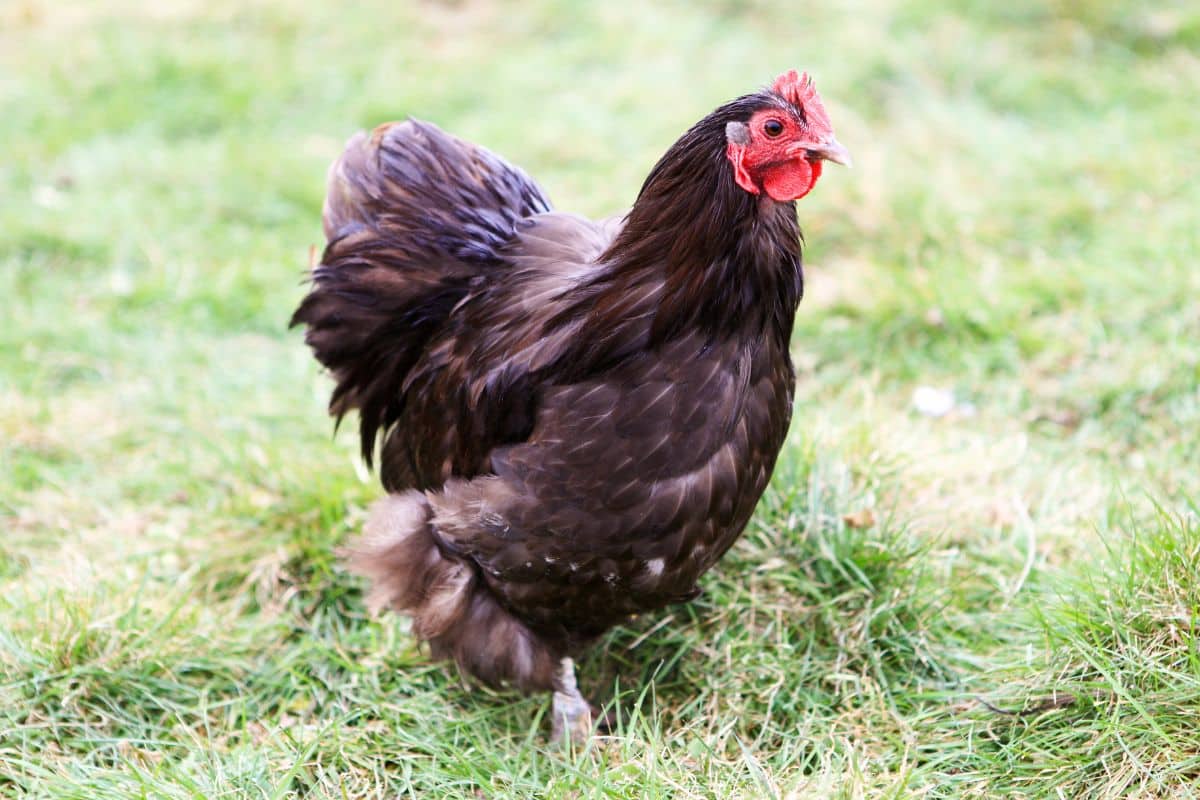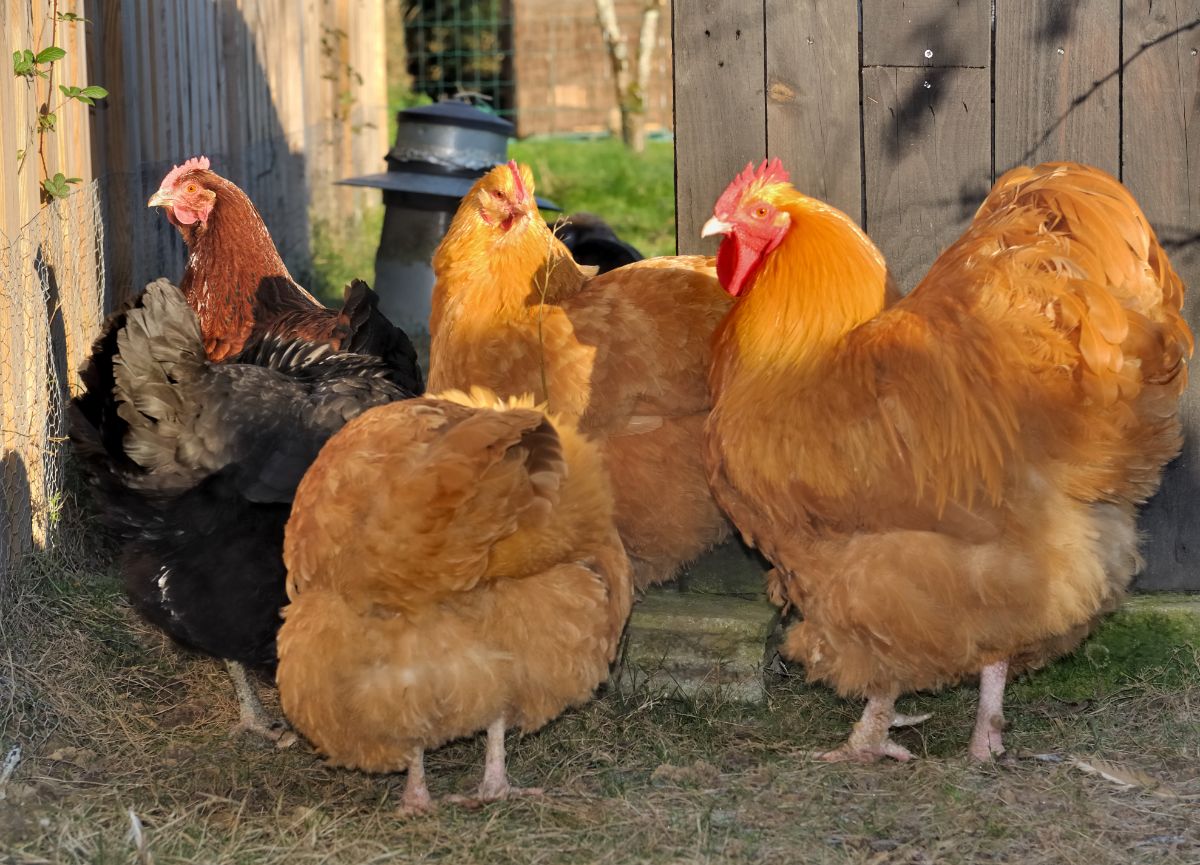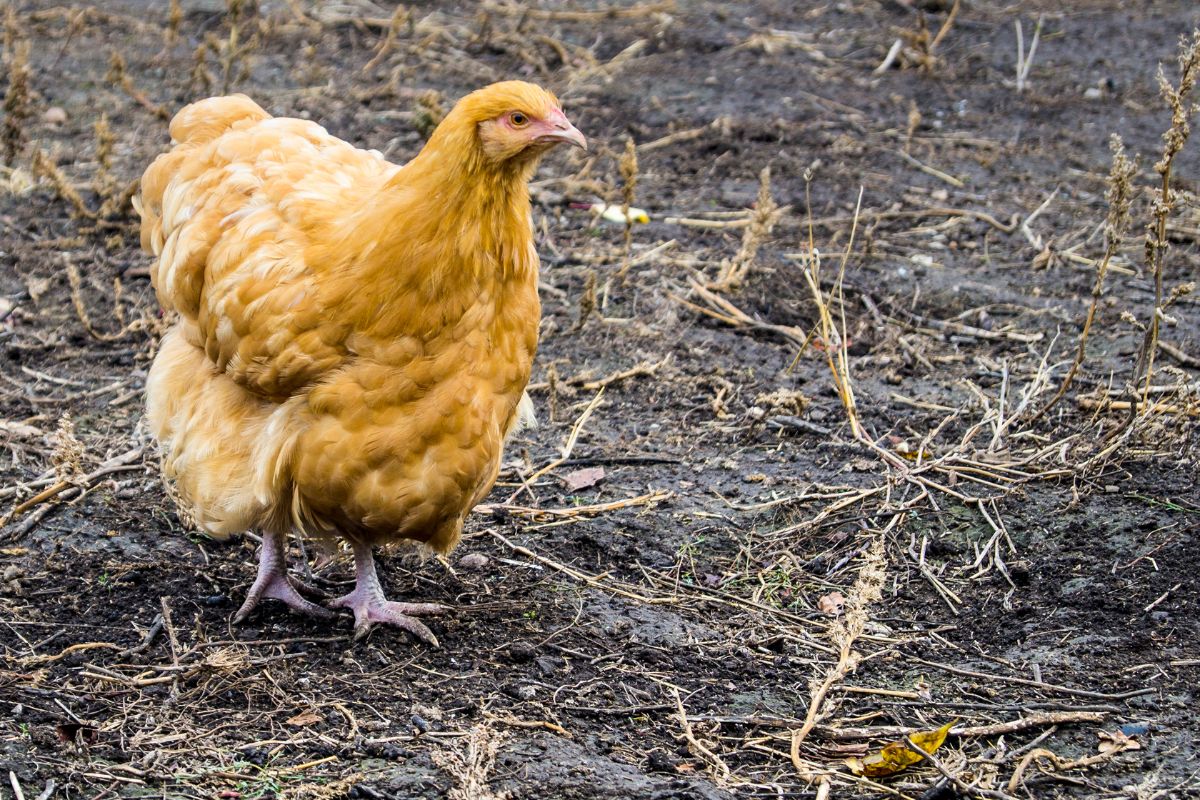This dual-purpose beauty is often considered the quintessential English barnyard bird. They have gained popularity in recent years because of their sweet, friendly personality and ease of care. Besides their bright demeanor, they are high-producing when it comes to eggs and meat.

They are a wonderful choice for urban or backyard chicken owners, as they are comfortable in a smaller coop and run. In fact, they tend to be on the lazier side, so it’s best to encourage as much exercise as possible!
Jump to:
How to Buy Online Orpington Chickens

Buff Orpington Chicks As low as: $2.55 - Read reviews
Silver Laced English Orpington Chicks As low as: $8.95 - Read reviews
Buff Orpington Bantam Chicks As low as: $4.60 - Read reviews
Jubilee Orpington Chicks As low as: $8.85 - Read reviews
Lavender Orpington Chicks As low as: $5.95 - Read reviews
Buff Orpington Exhibition Type Chicks As low as: $19.95 - Read reviews
Buff Orpington Hatching Eggs As low as: $3.84 - Read reviews
Lavender Orpington Hatching Eggs As low as: $3.84 - Read reviews
Buff Orpington Started Pullets As low as: $125.00 - Read reviews
Orpington Chicken Breed Quick Info
Orpington Chicken Description
| Orpington Type/Size: | Standard |
| Feather Color: | Buff, blue, white, black |
| Leg Type: | Non-Feathered |
| Leg Color: | Buff, blue, white, black |
| Skin Color: | White |
| Orpington Ease of Raising/Keeping: | Easy |
| Orpington Special Care Needs: | No |
| Is the Wyandotte breed a common, rare, or protected breed of chicken? | Protected |
Orpington Use
| Meat | Yes |
| Eggs | Yes |
| Dual Purpose | Yes |
| Orpington Temperament: | Gentle, docile, active |
| Orpington Ability/Likelihood to Free Range: | Yes |
Orpington Egg Production
| Egg Color | Brown |
| Egg Size | Large |
| Estimated Number of Eggs Per Year | Gentle, docile, active |
| Likeliness to Brood Eggs/Raise Chicks | High |
Orpington Meat Production
| Dressed Weight Male | 7 lbs. |
| Dressed Weight Female | 5 ½ lbs. |
Orpington Climate Tolerance
| Heat | Moderate |
| Cold | Good |
Orpington Age to Maturity
| Number of Months to Reach Full Size | 5 Months |
| Number of Months to Start Egg Laying | 5 Months |
| Number of Weeks/Months to Reach Meat Harvest Size | 22 Weeks |
Orpington Size at Maturity
| Male | 10 lbs. |
| Female | 8 lbs. |
Origins of the Orpington Chicken

This heritage breed was developed in Great Britain during the 19th century by William Cook, a coachman who lived in Orpington, Kent. They originated by cross-breeding a Minorca and a Black Plymouth Rock. Cook also bred in the Langshan and eventually developed the Orpington we know today - a solid, dual-purpose breed.
The Orpington gained great popularity throughout the rest of the 19th and early 20th centuries. But up until 2016, it was actually considered endangered by the American Breed Livestock Conservancy. Fortunately, it was removed from the endangered list because of renewed interest by backyard chicken owners and homesteaders.
Some Things to Know About the Orpington Chicken

Orpington chickens are characterized by their deep breast, curved back, and short legs. They are large, heavily-feathered birds and can have either a rose comb or a single comb.
You can find them in four official colors: buff (the most common), black, white, and blue. There is also a lavender variety sold by some hatcheries, but this color is not yet approved by the American Poultry Association.
How Easy is it to Keep Orpington Chickens?

Orpingtons are wonderful birds for beginner homesteaders and backyard chicken owners, especially those who live in cold climates. Their heavy plumage means they continue laying eggs throughout the winter. And alongside those beautiful brown eggs, they also provide juicy, high-quality meat.
When it comes to their disposition, these beautiful golden chickens are known to be calm and friendly - some will even let you pick them up! They are a great option for families with children because of their gentle and tolerant nature.
Special Care and Considerations for Orpington Chickens
Orpington hens are considered broody, which means they are excellent mothers. If you are planning on breeding your flock, this is an ideal breed for you. If not, be aware of any sitting hens, and be sure to remove eggs on a daily basis.
Another thing to be aware of is heat. Although they thrive in colder climates, the summer heat can be a strain on them. Be sure to provide plenty of fresh, cool water and shade when temperatures rise.





